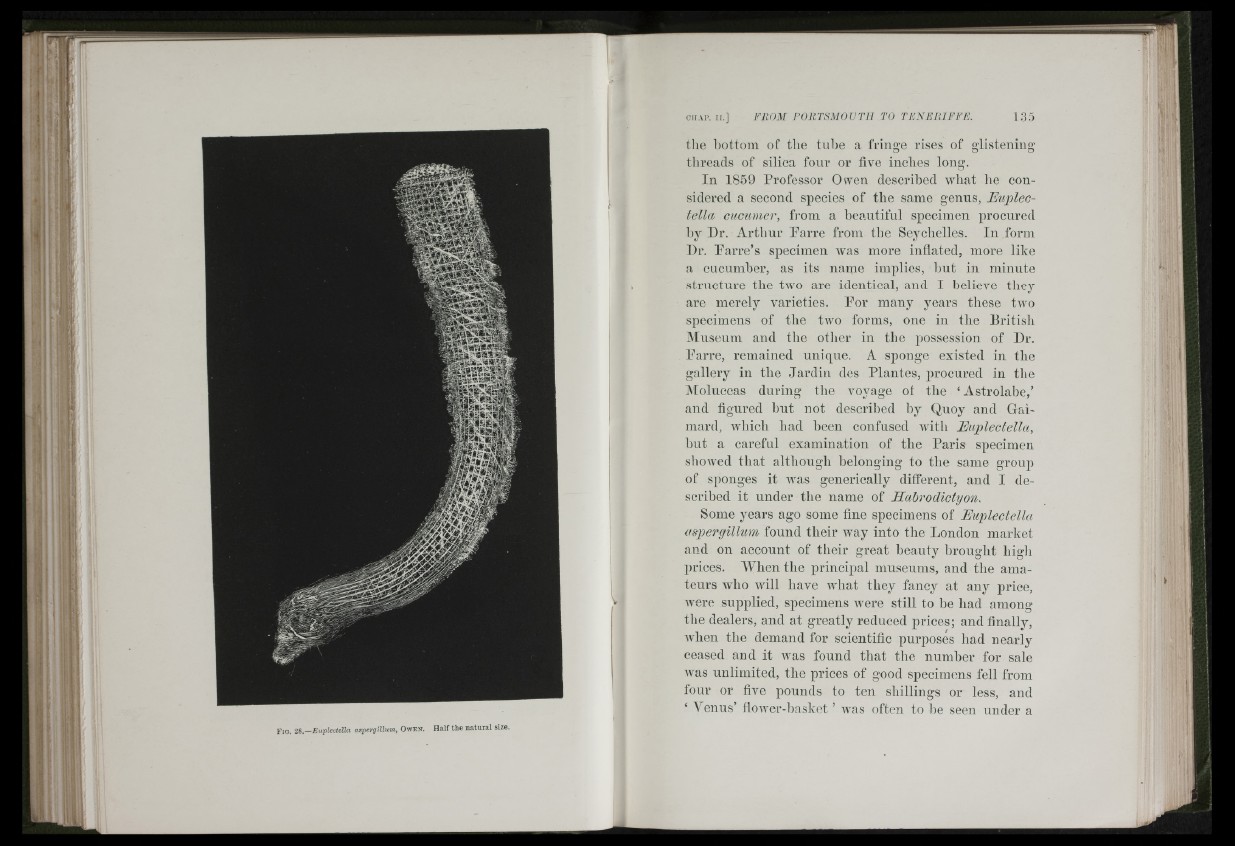
; ■ Y i j
i I
i
. i
(I:
It. ‘ *' pz
% :P T fS '‘P
’ .4.>C
•■“ . V f f f i
’ /»»-'A*’ A
X ^ i - y ' a i
. ,aaaw:»J:i„
• • -.4 ••• '*k-
•'*. • sSsl^'’'
• I « "»ifek'
if *•'* ,rv'^
i ’'k' ^
m m m w m
Fio. iS .— Euplectella asp erg illum, Owen. Half the n a tu ra l size.
FROM rO R T SM O V n i TO TENERIFFE. 13.5
the liottom of tlie tube a fringe rises of glistening
tlireads of silica four or five Indies long.
In 1859 Professor Oiven described Avliat be considered
a second species of the same genus, Euplectella
ciicumer, from a beautiful spedmen procured
by Dr. Arthur Parre from tbe Seychelles. In form
Dr. Parre’s specimen was more inflated, more like
a cucumber, as its name implies, but in minute
structure the two are identical, and I believe tliey
are merely varieties. Por many years these tivo
specimens of the two forms, one in the British
Alnseum and the otlier in the possession of Dr.
Parre, remained unique. A sponge existed in the
gallery in the Jardin des Plantes, procured in the
Moluccas during tbe voyage ol the ‘Astrolabe,’
and figured but not described by Quoy and Gai-
mard, Avliicb bad been confused with Euplectella,
but a careful examination of the Paris specimen
showed that althongli belonging to the same group
of sponges it Avas generically different, and I described
it under the name of Jlahrodictyon.
Some years ago some fine specimens of Euplectella
aspergillum found their way into the London market
and on account of their great beauty brought high
prices. AVhentlie principal museums, and the amateurs
who Avill have what they fancy at any price,
Avere supplied, specimens Avere still to be bad among
tbe dealers, and at greatly reduced prices; and finally,
when the demand for scientific purposes had nearly
ceased and it Avas found that the number for sale
AA^as unlimited, the prices of good specimens fell from
four or five pounds fo ten shillings or less, and
‘ Venus’ fioAver-basket ’ Avas often to be seen under a